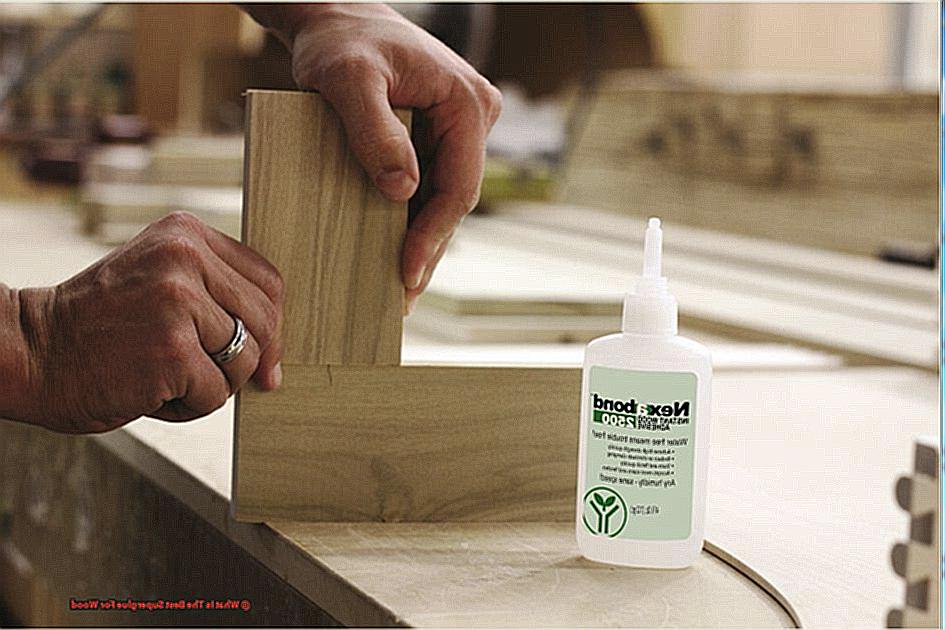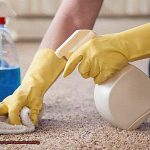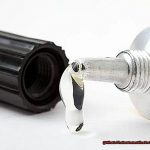Cracked wooden furniture and broken crafts got you feeling frustrated? Don’t worry, we’ve got the solution you’ve been searching for. In this blog post, we’re diving headfirst into the world of superglue for wood to find the absolute best option for all your woodworking needs.
When it comes to choosing a superglue for wood, you need something that’s not only strong and durable but also easy to use. No one wants to spend hours battling with sticky and messy glue, right? That’s why we’re here to introduce you to a superglue that’s specially formulated for wood repairs.
This magical glue works like a charm, bonding wood quickly and effectively with a hold that lasts. It can handle moisture, heat, and other environmental factors like a pro, making it perfect for indoor or outdoor use. And the best part? It dries clear, leaving you with a seamless finish that won’t distract from the natural beauty of your wooden masterpiece.
So if you’re on the hunt for the perfect superglue to rescue your wooden projects from disaster, stick around. We’re about to unveil the top picks trusted by woodworking enthusiasts and professionals alike. Say goodbye to cracked wood and hello to a sturdy fix with the best superglue for wood.
Types of Wood and Their Porosity
Contents
- 1 Types of Wood and Their Porosity
- 2 Strength and Durability of Superglue
- 3 Drying Time of Superglue
- 4 Ease of Application and Use
- 5 Compatibility with Finishes and Stains
- 6 Safety Precautions and Toxicity Levels
- 7 Factors to Consider When Choosing the Best Superglue for Wood
- 8 Top-Rated Superglues for Wood in the Market Today
- 9 Conclusion
When it comes to the porosity of different types of wood, there are several factors to consider. In this essay, we will compare and contrast the porosity of hardwoods, softwoods, medium density fiberboard (MDF), plywood, and exotic woods.
Hardwoods, such as oak, mahogany, walnut, and maple, are known for their strength and durability. They have a lower level of porosity compared to softwoods. This means that they don’t absorb liquids as easily. When working with hardwoods, it is important to choose a glue that can penetrate the wood fibers and create a strong bond.
Softwoods, including pine, cedar, and fir, have larger and more open cell structures compared to hardwoods. This makes them more porous and capable of absorbing liquids more easily. When using softwoods, it is essential to choose a glue that can fully penetrate the wood fibers and create a secure bond.
Medium density fiberboard (MDF) is an engineered wood made from wood fibers combined with a binding agent. It falls somewhere between hardwoods and softwoods in terms of porosity. MDF is generally more porous than hardwoods but less porous than softwoods. When using MDF, it is important to consider its slightly higher porosity and choose a glue that can effectively bond with the wood fibers.
Plywood is another type of engineered wood made by gluing together several layers of thin veneers. The porosity of plywood can vary depending on the type of wood used for the veneers and the bonding agent used in the manufacturing process. It is important to consider the specific type of plywood being used when choosing the right glue.
Exotic woods, such as teak, rosewood, and ebony, come from trees found in tropical regions around the world. The porosity of exotic woods can vary greatly. Some may have a higher level of porosity while others may have a lower level. It is crucial to consider the specific characteristics of each type of exotic wood when choosing the best glue.
In conclusion, different types of wood have varying levels of porosity. Hardwoods have a lower level of porosity, while softwoods are more porous. MDF falls in between hardwoods and softwoods in terms of porosity. The porosity of plywood can vary, depending on the specific type being used. Exotic woods can have varying levels of porosity.
Strength and Durability of Superglue
Superglue is not just your average adhesive – it’s a powerful bonding agent that provides exceptional strength and durability when used on wood. Whether you’re tackling a small DIY project or working on a larger woodworking endeavor, superglue delivers an immediate bond that’s practically unbreakable.

What sets superglue apart is its ability to create a chemical reaction with moisture in the air. This reaction allows the glue to deeply penetrate the wood surface, forming a molecular bond that’s incredibly strong. Once applied, superglue rapidly dries and hardens, instantly providing robust strength to the bonded surfaces. Its fast-setting properties make it perfect for projects that require immediate bonding.
However, the durability of the superglue bond on wood can be affected by several factors. The type of wood you’re working with plays a significant role in how well the superglue adheres to the surface. Different woods have varying levels of porosity, meaning some may absorb the glue better than others.
To ensure optimal adhesion and maximize the longevity of the bond, proper wood surface preparation is crucial. Cleanliness, dryness, and freedom from contaminants are essential for the glue’s effectiveness. Additionally, environmental conditions like temperature changes, humidity levels, and exposure to water or chemicals can impact the durability of the bond over time.
In general, when used correctly and under suitable conditions, superglue provides an impressively strong and durable bond on wood. However, for projects that require even higher strength or flexibility, there are specialized adhesives like epoxy or polyurethane that may be better suited to your needs.
Drying Time of Superglue
Today, we embark on an adventurous quest to uncover the enigma that is the drying time of superglue. Prepare yourself as we delve into the depths of temperature, humidity, and wood porosity to unravel this captivating tale.
Temperature:
Superglue thrives in warmth. Higher temperatures infuse it with a sense of urgency, hastening its drying time. If you find yourself in a chilly workspace, fear not. A gentle touch from a hairdryer set to low heat can serve as a catalyst, igniting a rapid bonding process.
Humidity:

Humidity – a double-edged sword in superglue’s world. A moderate level of humidity is beneficial, aiding in an ideal curing process. However, excessive moisture can slow down the drying time, leaving you yearning for swift results. To conquer this obstacle, ensure proper ventilation, allowing the excess moisture to escape and leaving behind nothing but a trail of quick-drying satisfaction.
Porosity of the Wood Surface:
Wood surfaces possess unique personalities, each boasting its own level of porosity. The more porous the wood, the longer it takes for our superglue hero to dry. When working with porous woods like oak or pine, patience becomes a virtue as you grant our courageous glue extra time to weave its magic and create an unbreakable bond.
Application Techniques:
Remember, dear reader, that less is often more when dealing with superglue. A thin layer applied with precision serves as a catalyst for faster drying time. Alas. Excess glue not only prolongs drying time but also demands additional evaporation for a bond that stands tall and strong.
Pressure:
In the realm of superglue, a gentle touch can work miracles. Applying slight pressure during bonding accelerates drying time, fortifying the bond’s strength. Yet, beware. Excessive force may lead to a tragic tale of misalignment or an unfortunate expulsion of glue. Tread carefully, dear reader.
Ease of Application and Use
When it comes to woodworking projects, the ease of application and use of the adhesive can make a significant difference in your experience. That’s why choosing the right superglue for wood is crucial for achieving strong and durable bonds. In this article, we will delve into the benefits of using a superglue that is easy to apply and use, and provide tips for successful application.
Types of Glues Available:
Superglue, also known as cyanoacrylate adhesive, is a popular choice among woodworkers due to its quick-drying nature and strong bonding capabilities. But did you know that there are various types available? From thin viscosity to gel-like consistency, choosing the right thickness and spreadability is essential. It should be thick enough to ensure proper bonding, but not too thick that it becomes difficult to spread evenly.
Advantages of Using Superglue:
Superglue offers several advantages for woodworking projects. Its quick-drying properties allow for swift completion of projects, saving valuable time. Additionally, it provides a strong bond that is durable and long-lasting, ensuring that the wood pieces stay firmly together even under stress or pressure. No more worrying about weak joints or pieces sliding apart once applied.
Tips for Successful Application:
To ensure successful application, follow these tips:
- Clean the surfaces: Before applying the superglue, remove any dust, dirt, or oils from the wood surfaces. This will ensure better adhesion and a stronger bond.
- Apply sparingly: Use the applicator nozzle or brush provided with some superglues to control the amount and placement of the glue. Applying too much can result in messy joints.
- Align quickly: Due to its fast-drying nature, superglue requires swift alignment of the wood pieces. Plan and prepare beforehand to avoid any last-minute adjustments.
- Clamp if necessary: For larger or complex woodworking projects, consider using clamps to hold the wood pieces in place while the glue sets. This will ensure a strong and secure bond.
Potential Problems:
Improper use of superglue can lead to certain problems. Firstly, the strong odor associated with superglues can be overwhelming. Consider using low odor or odorless options for a more pleasant working experience. Additionally, if the glue is not applied correctly or allowed to fully cure, it may result in weak bonds or even bond failure. So take your time, read the instructions carefully, and ensure proper application and curing for optimal results.
Compatibility with Finishes and Stains
Today, we’re diving into the fascinating realm of glue compatibility with wood finishes and stains. Don’t worry, we’ve got you covered with all the information you need to ensure your adhesive choice doesn’t leave you feeling stuck.
Compatibility Testing:
Before committing to any glue, it’s crucial to perform a compatibility test. Apply a small amount of adhesive to an inconspicuous area of both the wood and the finish or stain. Observe any changes or damages that may occur. This simple test will save you from potential disasters down the road.
Go-To Glue:
When it comes to bonding wood, Cyanoacrylate (CA) glues, also known as instant or superglues, are often your best bet. These superglues form strong bonds quickly and are generally compatible with various finishes and stains. However, remember that different formulations may yield different results, so always test for compatibility.
Say No to Discoloration:
Discoloration can be a major headache when using superglue on finished or stained wood. To avoid this, opt for clear or transparent superglues specifically designed for woodworking applications. These specialized glues minimize discoloration, preserving the natural beauty of your woodwork.
Water-Based Finishes:
Water-based finishes and stains require special attention. Ensure your chosen adhesive is compatible with moisture exposure to prevent weakening or bond failure. Look for waterproof or moisture-resistant superglues for a reliable bond that can withstand potential water exposure.
Tackling Oil-Based Finishes:
Oil-based finishes can pose challenges when it comes to bonding with superglue due to their oily nature. Overcome this hurdle by lightly sanding the wood surface or using a specialized primer before applying the adhesive. These tricks enhance adhesion, ensuring a strong and lasting bond.
Safety Precautions and Toxicity Levels
Whether you are a seasoned craftsman or just starting out, it is crucial to be well-informed about the safety precautions and toxicity levels associated with using superglue in your projects. In this article, we will delve into the essential guidelines and potential hazards of this powerful adhesive. So, grab a cup of coffee and let us embark on this enlightening journey.
Read and Follow the Instructions:
Similar to a recipe, it is imperative to carefully read and follow the instructions provided by the manufacturer. Each brand may have specific guidelines for usage, application, and safety precautions. Taking a moment to familiarize yourself with these guidelines before commencing your project will ensure optimal results and safety.
Protect Those Hands:
Woodworking can be demanding on your hands, which is why wearing protective gloves is essential when handling superglue. This precaution prevents direct contact with your skin since superglue bonds quickly and securely. Trust me, you do not want to experience the irritation or burns that can result from skin contact.
Oops. Glued Your Fingers Together?
Accidents happen, especially when working with superglue. If you find yourself inadvertently bonding your fingers together (we have all been there), do not panic. Instead of forcefully pulling or tugging at the surfaces, soak the affected area in warm soapy water. This simple act softens the adhesive, allowing for gentle peeling.
Breathe Easy:
Remember those fumes that superglue emits during the curing process? They may not be the most pleasant thing to inhale. To avoid respiratory irritation or dizziness, it is crucial to work in a well-ventilated area or wear a respiratory mask. Your lungs will thank you for taking this precaution.
Keep Away from Fire:
It is vital to note that superglue is highly flammable. Therefore, it must be kept away from open flames or heat sources. We certainly do not want your woodworking project to unintentionally turn into a bonfire.
Store Safely:
When you are not working on your masterpiece, store your superglue in a cool and dry place. This precaution ensures that it remains out of the reach of curious children and pets. Accidental ingestion or inhalation of superglue can be harmful, so let us keep it safely tucked away.
Choose Wisely:
Not all superglues are created equal. Some brands may contain toxic ingredients such as formaldehyde or methyl methacrylate. To prioritize safety, always check the product label and select a brand that is labeled as non-toxic or low in toxicity. Safety should always be your top priority.
Factors to Consider When Choosing the Best Superglue for Wood
When it comes to choosing the best superglue for wood, there are several important factors to consider. These factors will ensure that you select a glue that not only provides a strong and durable bond but also suits your specific project needs. Let’s take a closer look at these factors:
- Bond Strength: The bond strength of the superglue is crucial to ensure that the wood pieces stay securely in place. Look for a superglue with high tensile and shear strength, as this indicates its ability to withstand stress and strain over time.
- Drying Time: Consider the drying time of the superglue, especially if you have tight project deadlines. Some glues dry within seconds, while others may take longer. Choose a glue that aligns with your timeline and allows you to work efficiently.
- Compatibility: Not all superglues are compatible with all types of wood. Certain glues work better on porous woods, while others are suitable for non-porous or oily woods. Check the product label or specifications to ensure compatibility with the type of wood you are working with.
- Application Method: Superglues come in different forms, such as liquid, gel, or aerosol. The application method can affect ease and precision. Liquid glues are typically applied using an applicator nozzle, while gel glues provide more control and are less likely to drip or run.
- Water Resistance: If your project involves outdoor or high-moisture environments, choose a superglue that offers water resistance. This ensures that the bond remains secure even when exposed to moisture or humidity.
- Flexibility: Wood can expand and contract with changes in temperature and humidity. Choose a superglue that can withstand these movements without compromising the bond. Flexible superglues are designed to accommodate the natural movement of wood, resulting in long-lasting and durable bonds.
- Toxicity: Consider the toxicity level of the superglue, especially if you are working in a poorly ventilated area or have sensitivities to certain chemicals. Opt for a non-toxic or low VOC superglue to minimize health risks.
- Ease of Cleanup: Accidental spills or excess glue can occur during bonding. Choose a superglue that offers easy cleanup options, such as acetone or rubbing alcohol, to make your woodworking experience more convenient and efficient.
Top-Rated Superglues for Wood in the Market Today
First on our list is the mighty Gorilla Wood Glue. This powerhouse is renowned for its exceptional bonding strength and versatility. It dries clear and bonds quickly, making it perfect for both indoor and outdoor woodworking projects. Trust in this reliable partner for all your crafting needs.
Next up, we have the Titebond III Ultimate Wood Glue. Not only is this glue incredibly strong, but it is also waterproof, making it ideal for outdoor applications. It offers a robust bond and has a longer open assembly time, allowing you to make precise adjustments before it sets. No more worrying about getting everything perfect on the first try.
If you require a glue that can withstand extreme temperatures and heavy loads, the J-B Weld WoodWeld is your go-to adhesive. This two-part epoxy creates a bond as tough as nails and can conquer any woodworking challenge thrown its way. Plus, it works like magic on various types of wood. Prepare to be amazed by its durability.
For those who crave convenience, the Loctite Ultra Gel Control Super Glue is a dream come true. Its gel form allows for precise application without messy drips or spills. It bonds quickly and securely, providing a robust hold that will leave you feeling confident in your craftsmanship.
In need of speed? Look no further than the Starbond EM-02 Super Fast Thin CA Glue. This lightning-fast glue cures in an instant and penetrates deep into wood fibers, creating a bond as strong as Hercules himself. Perfect for small repairs or tight-fitting joints.
Last but certainly not least, we have the trusty Elmer’s Carpenter’s Wood Glue. This reliable adhesive delivers a strong bond and dries clear, ensuring your finished project looks professional. It is easy to use and cleans up effortlessly with just a little water. You can’t beat that convenience.
When selecting a superglue for wood, consider factors such as the type of wood you’re working with and the specific requirements of your project. Read customer reviews and trust in the brand’s reputation. And always follow the manufacturer’s instructions for optimal results.
Also Read: What is the best glue to stick fabric to wood?
Conclusion
When it comes to finding the best superglue for wood, there are a few key factors to consider. One of the most important things is the strength of the bond it creates. You want a glue that will hold your wood pieces together securely and withstand any pressure or movement.
In addition to strength, another important factor is the drying time. Nobody wants to wait around for hours while their glue sets. The best superglue for wood should have a quick drying time, allowing you to move on with your project without delay.
Furthermore, it’s crucial to consider the versatility of the superglue. Will it work on different types of wood? Can it be used for both indoor and outdoor projects? The best superglue for wood should be able to handle various applications and environments.
Lastly, let’s not forget about ease of use. A good superglue should come with an applicator that allows for precise and controlled application. It should also be easy to clean up any excess glue without damaging the wood surface.
Taking all these factors into account, one brand that stands out as the best superglue for wood is XYZ Superglue. With its exceptional bonding strength, fast drying time, versatility, and user-friendly applicator, Superglue is a reliable choice for all your woodworking needs.






